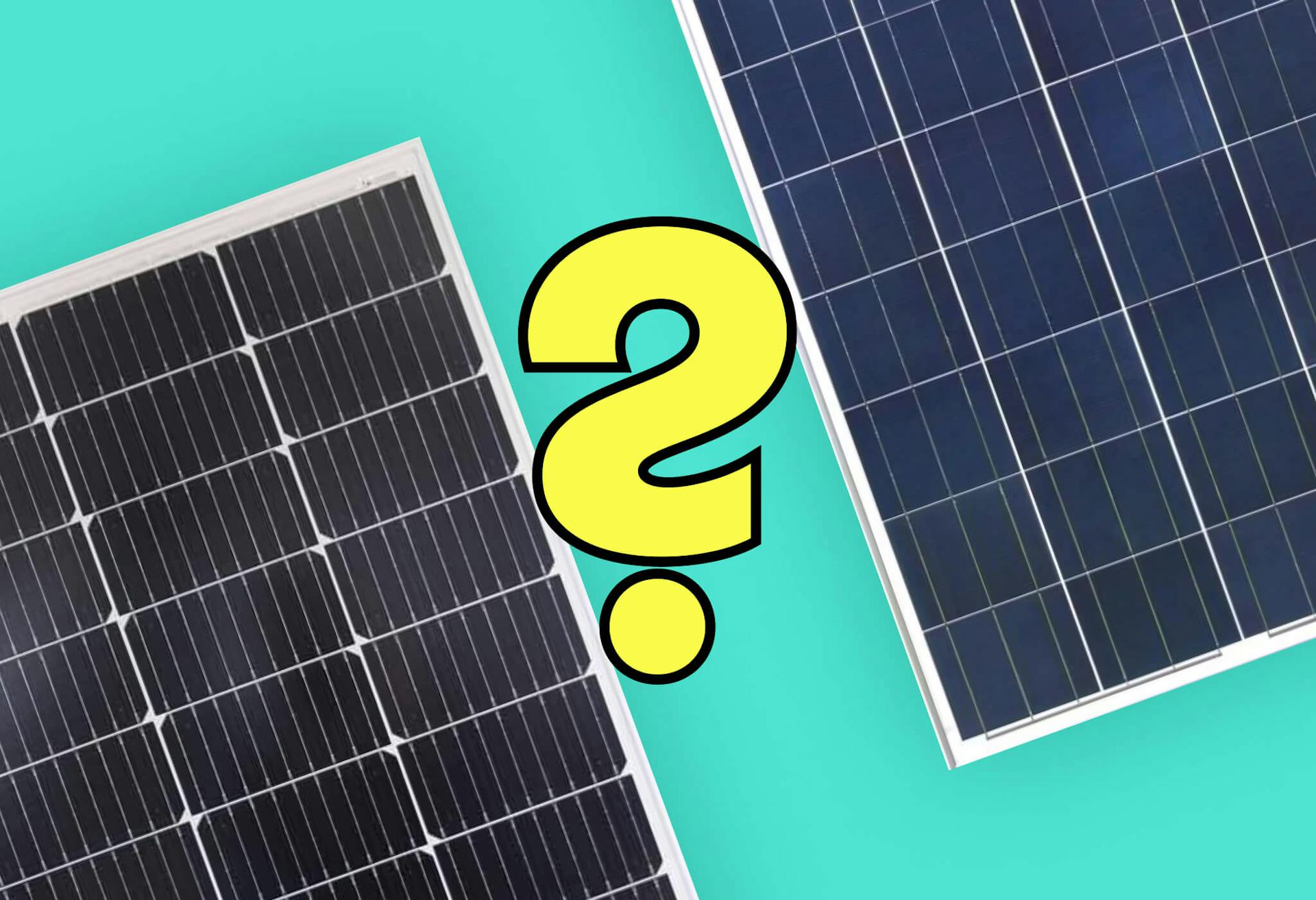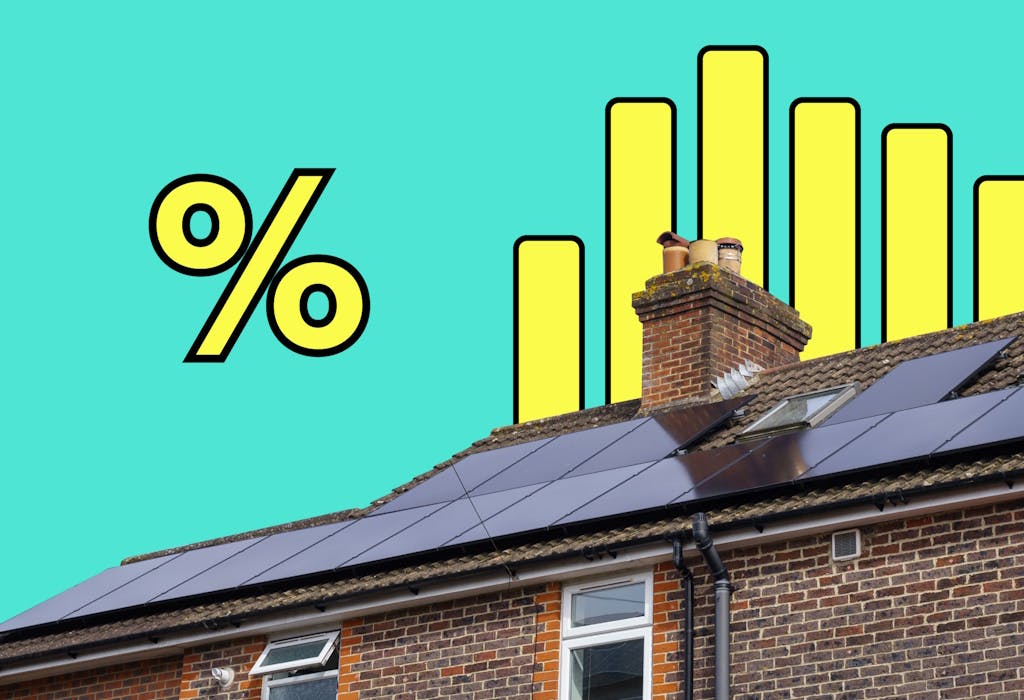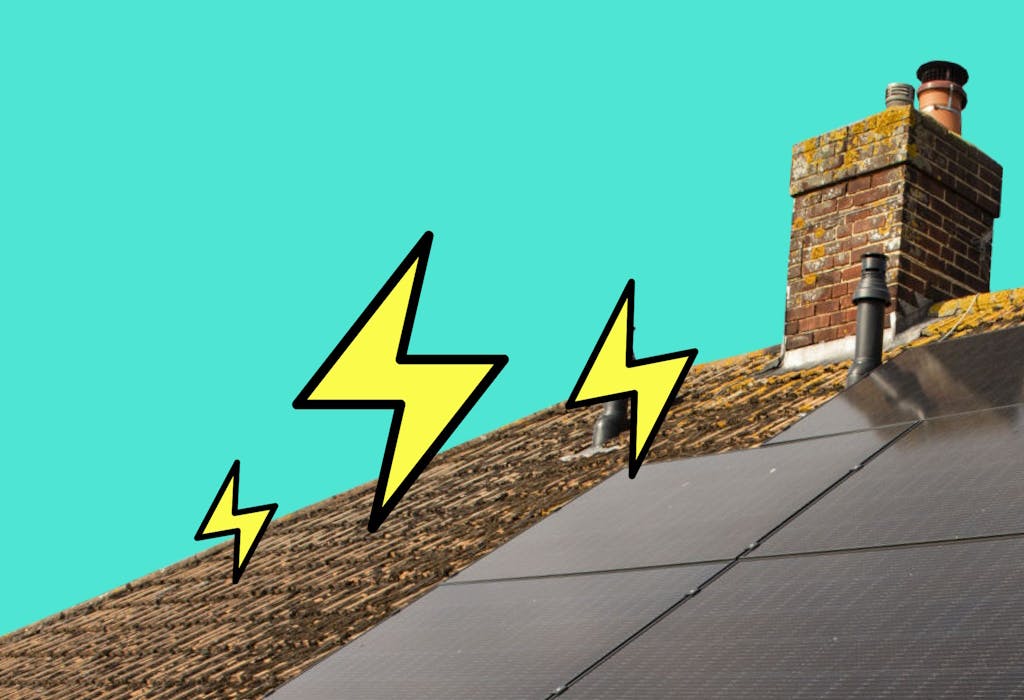- Solar advice hub
- Solar-technology
- Monocrystalline solar panels: the expert guide
Monocrystalline solar panels: the expert guide
Here are what monocrystalline solar panels are, how they’re made, and why they're better than other panel types.


Why you can trust our content
We know that the solar industry is full of misinformation, but we only use reliable sources, including:
- Our experienced solar experts, installers and system designers
- Our own database of solar & battery system designs
- Authoritative bodies like MCS and the UK government




At a glance
When you go solar, your system will almost certainly use monocrystalline solar panels.
This panel is the best and most popular type available to homes, having entirely replaced polycrystalline models, according to the International Energy Agency – which is why you can see black solar panels going up on rooftops all over the UK.
In this guide, we’ll explain what monocrystalline solar panels are, how they’re made, the different varieties, and the attributes that put them streets ahead of any other type of panel.
If you’re wondering how much you could save with a solar & battery system, enter a few details below and we’ll generate a quick estimate.
What are monocrystalline solar panels?
Monocrystalline solar panels are made with wafers cut from a single silicon crystal ingot, which allows the electric current to flow more smoothly, with less resistance.
This ultimately means they have the highest efficiency ratings, longest lifespans, and best power ratings on the market, ahead of all other types of solar panels.
Over the past few years, this has led to monocrystalline panels replacing polycrystalline models as the most popular option for manufacturers and households around the world.
As a result, all the most powerful solar panels are now made with monocrystalline.
How are monocrystalline solar panels made?
These solar panels are made with extremely pure polysilicon, which is created by melting nuggets of quartzite at around 1,700°C, then refining it by using the Siemens process.
Workers heat the resulting ingots at 1,425°C while rotating them, during which time a seed crystal of silicon is gradually pulled through the molten polysilicon, producing a single silicon crystal ingot.
This process, called the Czochralski method, is what makes monocrystalline solar panels darker and more efficient then their polycrystalline counterparts.
A single ingot is more able to absorb light, which gives them their black appearance – plus chemical etching and anti-reflective coating removes any grey undertones.
The silicon crystal ingot is then cut into super-thin wafers and printed with metal contacts, which are conductive, grid-like lines that carry the electric current.
Workers will then attach these wafers to glass or plastic, protect them with a backsheet, and surround them with a frame.

What are the characteristics of monocrystalline solar panels?
Monocrystalline solar panels perform strongly on all key fronts, which is why they’re currently the most popular type of panel.
If you go for monocrystalline panels, you’ll be choosing from a collection of the most efficient, powerful, and long-lasting modules on the domestic market.
With their sleek, black appearance, many would also say they’re the most aesthetically pleasing solar panels around, though this is more of a subjective call.
Efficiency
Solar panel efficiency describes the percentage of daylight that a panel can convert into electricity for your household and the grid.
The higher this percentage is, the more electricity you can generate with the same amount of roof space, and the more you can save on your energy bills.
It’s basically a measure of your panel’s power rating divided by its size – or watts per m², as it’s usually known.
Monocrystalline solar panels are usually 20-25% efficient, whereas polycrystalline panels’ efficiency ratings tend to fall between 13% and 16%, and solar tiles are around 10-20% efficient.
Power
A solar panel’s power rating refers to how much electricity it can generate in standard test conditions (STC).
This involves the manufacturer keeping the panel’s temperature at 25°C, placing it under a light source that shines at 1,000 watts (W) per m², and creating an air mass of 1.5 – all to simulate sunlight.
If a solar panel produces 400W under these conditions, that’s its power rating. Since all panels are tested under STC, this panel should produce exactly 25% more electricity than a 300W model.
The best monocrystalline solar panels have power ratings upwards of 500W, with some exceeding 600W and even 700W.
In contrast, you’ll struggle to find a polycrystalline panel with a power rating above 400W, and they’ve long fallen around 20% below monocrystalline models, according to data analysts Wood Mackenzie.
However, it’s more important to consider a panel’s watts per m², as this will determine how many of these powerful panels you can fit on your roof – and therefore how much electricity you can generate with them.
It’s often more profitable to build a system from smaller, more efficient panels than a few behemoths that take up more space than they should.
If you’re wondering how much you could save with a monocrystalline solar & battery system, enter a few details below and we’ll generate a quick estimate.
Lifespan
Monocrystalline solar panels generally last between 30 and 40 years.
This means they have a significantly longer lifespan than all other types of panels.
Polycrystalline models and solar tiles usually last 25-30 years, while thin-film solar panels tend to cap out at 10-20 years.
However, it’s possible the industry as a whole is underestimating the longevity of solar panels.
Germany’s Oldenburg University installed a 3.46 kilowatt-peak (kWp) polycrystalline system onsite in 1976, and an Oldenburg representative told us that the panels “are indeed still working; they feed more than 3,000 kilowatt-hours of electricity into the grid per year.”
This far outstrips all modern estimations for how long a system of this kind should last.
Aesthetics
The sleek, black appearance of monocrystalline solar panels makes them look modern and stylish, with the added bonus that they often blend into the background.
There are a few different styles of monocrystalline panels, as some manufacturers have increasingly tried to make their frames, backsheets, and grid lines stand out less.
So while most monocrystalline models are various shades of black with silver criss-crossing their surface, you can also find all-black panels that look indistinguishable from a flat-screen TV.
This design has proved extremely popular, especially compared to other types of solar panels that don’t have the same attractive qualities as monocrystalline panels.
How much do monocrystalline solar panels cost?
A 3kWp monocrystalline solar panel system usually costs around £9,000, including the price of installation.
This can rise to £11,000 if you’re adding a 5kWh battery, or more if you choose to get a battery fitted at a later time.
These costs are just estimates, and can vary massively depending on a wide range of factors, including your installation’s size and complexity.
| Property size | Annual electricity usage (kWh) | System size (kWp) | No. of solar panels (430W) | Estimated cost | Annual CO2 savings (kg) |
|---|---|---|---|---|---|
| 2-3 bedrooms | 2,700 | 3 | 7 | £9,000 | 641 |
| 4-5 bedrooms | 4,100 | 5.2 | 12 | £10,500 | 1,100 |
| 6+ bedrooms | 6,500 | 8.2 | 19 | £13,500 | 1,741 |
For more information, check out our guide to how much solar panels cost in the UK.
How popular are monocrystalline solar panels?
Monocrystalline solar panels have completely replaced polycrystalline panels as the most popular solar panel in the world.
Monocrystalline solar cells now account for 98% of solar cell production, according to a 2024 report from the International Energy Agency.
This compares starkly with 2015, when just 35% of solar panel shipments were monocrystalline, according to the National Renewable Energy Laboratory.
Even as recently as 2018, monocrystalline panels made up a minority of global shipments.
Practically all new solar installations now use monocrystalline panels, and almost certainly will for the foreseeable future.
Solar panel production by technology, 2023
All the solar panel types in this chart are different variants of monocrystalline panels, bar CdTe, which means 98% of solar panels shipped in 2023 were monocrystalline.
The only other solar panel technology to be shipped at a notable level was CdTe (cadmium telluride), or thin-film solar panels. This type has never surpassed 19.9% efficiency, and most of its models fall well short of this mark.
Amidst this stunning display of monocrystalline dominance, manufacturers paired these panels with five different technologies: TOPCon, PERC p-type and n-type, HJT, and back contact (more detail on these in the next section).
Types of monocrystalline solar cell
The different types of monocrystalline solar cell use various chemical and technological processes to gain advantages over traditional models.
These ingenious developments have brought us to the current situation, where solar panels are more powerful, efficient, durable, and visually appealing than ever.
However, modern improvements tend to only enhance cells by a small amount, meaning you can go solar now without worrying about missing out on some big leap forward.
TOPCon
TOPCon (Tunnel Oxide Passivated Contact) solar panels tackle the age-old problem of metal contacts causing energy losses and a drop in efficiency.
In TOPCon panels, there’s a thin layer of silicon oxide – just a few nanometres wide – between the metal contact and the cell itself.
The only other major addition is a heavily doped polysilicon layer, which enhances the panel’s electrical conductivity and reduces transmission losses.
TOPCon technology was developed in the 2010s by Germany’s Fraunhofer Institute for Solar Energy Systems, and now makes up the majority of all solar panel shipments around the globe.
PERC
When manufacturers make PERC (Passivated Emitter and Rear Contact) solar panels, they replace the standard aluminium back surface with individual contacts and a couple of layers that improve the panel’s efficiency rating.
The first of these is a reflective back layer, so any light that doesn’t get absorbed at first is reflected back through the panel to the cells on top, to give them a second chance to use it.
Manufacturers also add a passivation layer, made of oxidised material. This acts as insulation, protecting the panel against overheating – which also raises a panel’s efficiency.
The technology was invented by Professor Martin Green of the University of New South Wales in 1983. It was the direct predecessor of TOPCon, which builds directly on the PERC technique.
This is why solar panels made with these two techniques look practically identical, and why manufacturers have barely had to adjust their processes to move from PERC to TOPCon.
Despite it now being the inferior method, PERC has persisted, and still makes up 41% of all solar panel production.
In the chart above, you’ll see there are both n-type and p-type PERC panels. These terms, which stand for ‘negative type’ and ‘positive type’, identify whether the electric current is caused by the movement of particles with a negative charge (electrons) or particles with a positive charge (protons).
N-type panels are doped with phosphorus, while p-type panels are doped with boron. The battle is currently being won by n-type varieties, which have higher efficiency ratings and lower degradation rates – though they are more expensive to produce.
HJT
HJT, or heterojunction technology, was first developed and mass produced by SANYO (which has since been absorbed into Panasonic) in the 1990s.
The company created this new technique by placing a thin-film layer on either side of a layer of monocrystalline silicon – hence the name ‘heterojunction’, since the panel uses different kinds of silicon.
Since it can absorb sunlight from more of the spectrum, the resulting panel has a higher efficiency rating than a standard traditional monocrystalline or thin-film panel.
The thin-film technology also provides HJT panels with a lower temperature coefficient, meaning they lose less of their efficiency as they heat up. This is especially useful in hotter countries.
Back contact
Back contact or rear contact solar panels attain higher efficiency ratings by shifting all the grid-like metal contacts from the front side to the back.
This prevents the metal contacts from blocking a portion of daylight from hitting the front of the panel, which increases the amount of light that it can turn into electricity.
Manufacturers ensure the daylight can make it through the panel to the metal contacts by using thin, top-tier solar cells.
LONGi, which currently produces one of the most efficient solar panels, is using back contact technology in its efforts to develop an even better model.
The best monocrystalline solar panels
There isn’t much to separate the best monocrystalline solar panels – they all operate at similar levels when it comes to power, efficiency, appearance, and durability.
If you get a top-tier model, you can expect to receive a mostly black panel with a power rating above 400W and an efficiency that’s higher than 21%. It should also perform at a high level for 30-40 years, though product warranties vary.
LONGi, JinkoSolar, AIKO, Canadian Solar, JA Solar, Trina, and Yingli all feature on both our lists of the most powerful solar panels and the most efficient solar panels.
These rankings are mostly made up of TOPCon and back contact panels, with a few instances of HJT models as well.
Some of the best panels include LONGi’s Hi-MO X10 Scientist – which is on both lists – and AIKO’s Neostar 1U+78 Dual-Glass, but as we said before, you don’t need the best panel; you need a top-tier model that makes financial sense for your household.
Are monocrystalline solar panels worth it?
Monocrystalline solar panels are definitely worth it.
They’re practically the only panel available for rooftop installations, and they’re certainly the only one you should be getting nowadays, assuming you want a system that gives you the highest possible savings and longest lifespan.
All the best technological and chemical advancements have been made in monocrystalline panels, and it’s likely to stay that way for a while.
The only technology that could feasibly overtake it is the perovskite-silicon tandem solar panel being developed by UK manufacturer Oxford PV, among others – but that likely won’t be on the market for years, and it’ll probably take a while to become affordable for most households.
Sunsave only uses monocrystalline solar panels, and many of our customers are already achieving excellent savings with them. You can see their verdicts on our reviews page.
Monocrystalline solar panels: FAQs

The 6 different types of solar panels
Read full story
The 9 most efficient solar panels
Read full story
The 9 most powerful solar panels
Read full story
The best new solar panel technology in 2025
Read full story
Written byJosh Jackman
Josh has written about the rapid rise of home solar for the past six years. His data-driven work has been featured in United Nations and World Health Organisation documents, as well as publications including The Eco Experts, Financial Times, The Independent, The Telegraph, The Times, and The Sun. Josh has also been interviewed as a renewables expert on BBC One’s Rip-Off Britain, ITV1’s Tonight show, and BBC Radio 4 and 5.